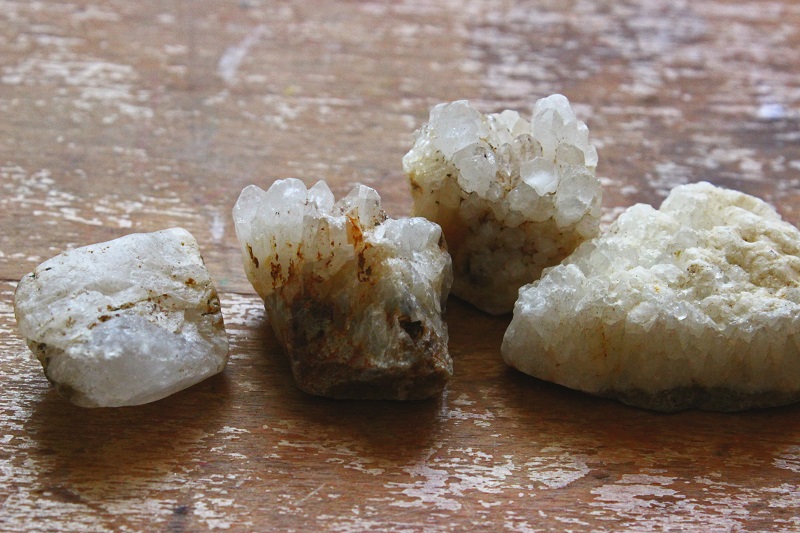Increasing Demand for Critical Minerals in the EU
As the European Union (EU) ambitiously pushes forward its green industrial plan, recent predictions from the European Commission indicate a staggering increase in demand for critical minerals, such as rare earths and lithium. By 2050, the demand for these essential raw materials could see up to 12 times and 60 times growth, respectively.
In response to this surging demand, the Commission proposed a law on raw materials in March 2023, laying the foundation of the EU’s environmental objectives alongside the net zero industry regulation. Adopted in December 2023, the Critical Raw Materials Act (CRMA) aims to establish national value chains for these materials within Member States.
- By 2030, provide at least 10% of the EU’s annual consumption of critical minerals;
- Process at least 40% within the Union;
- Ensure that at least 25% of these minerals come from national recycling;
- Limit imports of each ore to 65% of the EU’s annual consumption.
The CRMA, along with the Net Zero Industry Act (NZIA), acknowledges the EU’s excessive dependence on external supply chains and strives for internal self-sufficiency. However, current infrastructure and legislative frameworks within the Union present challenges for the growth of supply, refining, and recycling of these essential materials inside the Member States.
Potential Bottlenecks in Meeting EU Objectives
Geological Reserves and Public Opposition
Geological studies reveal that Europe’s national reserves have the potential to satisfy a significant portion of the EU’s demand for critical minerals. Based on these findings, CRMA anticipates Member States reviving mining activities by identifying strategic projects that benefit from easier access to financing and accelerated authorization processes.
However, this ambition faces hurdles in the form of complex national authorization procedures and deep-rooted public opposition towards mining activities within Europe.
Mineral Processing Constraints
Another crucial challenge is mineral processing. At present, the only rare earth processing plant in Europe is situated in Estonia. This limitation must be overcome if the EU plans to achieve its objectives outlined in the CRMA.
Recycling Complexities
Recycling critical minerals also presents complications as there is no systematic waste collection system, and economic incentives are relatively weak in many cases of mineral recycling. The utilization of secondary raw materials is often either unfeasible, as with coke coal in steel production, or undesirable due to low quality, as observed in lithium processing. In some cases, such as silicon recycling, existing technology proves insufficient for scaling up recycling efforts.
Economic Uncertainty and Skills Shortage
Lastly, both price volatility in commodity markets and workforce shortages pose barriers to attracting substantial private investments essential for meeting the ambitious goals of the CRMA.
How Europe Can Overcome These Challenges
Streamlining Regulatory Frameworks and Fostering Public Support
To address public opposition and complex authorization procedures, European governments should focus on streamlining their regulatory frameworks, promoting transparency, and involving local communities in decision-making processes. Raising awareness about the importance of critical minerals for a greener future could also help garner public support for responsible mining practices.
Expanding Mineral Processing Plants
In order to mitigate the lack of mineral processing facilities in Europe, private and public sectors should collaborate on expanding existing plants and establishing new ones. This will not only generate jobs but also facilitate achieving the EU’s self-sufficiency goals.
Improving Recycling Infrastructure and Technologies
The gaps in recycling infrastructure can be narrowed by investing in efficient waste collection systems and offering incentives for businesses that prioritize recycling initiatives. Moreover, research and development into innovative recycling technologies will be crucial to ensure that recycling processes are up to standards set by the CRMA.
Promoting Investment and Workforce Development
To address economic challenges and skills shortages, European governments need to work together with industry stakeholders to create attractive investment opportunities and foster an enabling business environment. Additionally, investing in education and workforce development programs targeting the critical minerals sector will help bridge skill gaps and ensure a thriving industry.
In Conclusion
Achieving the ambitious objectives outlined in the CRMA requires significant collaboration between European governments, the private sector, and communities alike. By addressing obstacles related to mining activities, mineral processing, recycling, and workforce development, Europe can make a substantial step towards self-sufficiency and a greener future powered by responsible critical mineral supply chains.


